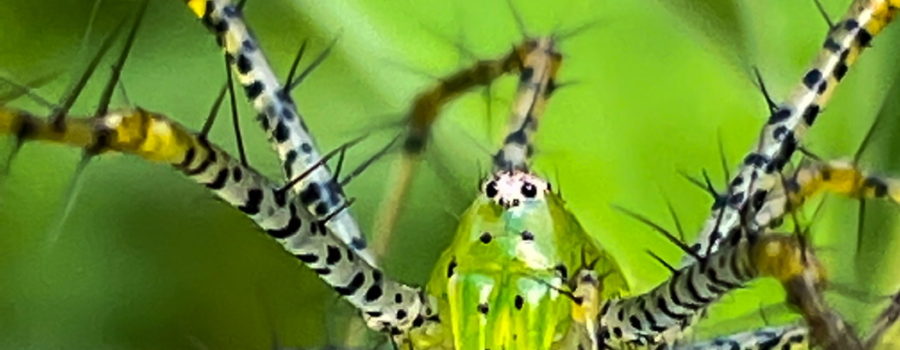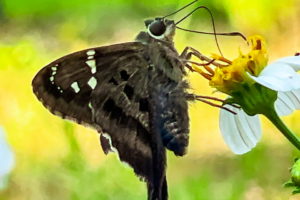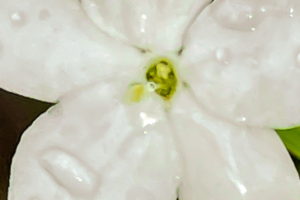The Beautiful Green Lynx Spider is Useful Against Crop Pests

At the end of last week I came home one afternoon with plans of a workout, a shower, and a quiet evening without any working. When I got out of the truck, I glanced across the yard and spotted a Tiger Swallowtail butterfly cruising around from flower to flower in the hairy beggarticks. I took a few photos before she flew off, but then I noticed a couple more butterflies and then I ran into a beautiful green spider jumping from leaf to leaf dragging a dead bee. Actually, the spider blended into the vegetation so well, that even though it was moving, I didn’t even see it at first. What I saw was the bee. At first, I thought that it was a green crab spider, but it was really much too big to be a crab spider. Plus, the black spots and spines on the legs were not like the plain green legs of the crab spider. It was then that I realized it was a green lynx spider. I have read about them before, but this was the first one I had ever seen personally.

Green lynx spiders are pretty common spiders in the southern United States, Mexico, Central America, and some of the islands in the West Indies, especially Jamaica. Even though they are common, most people rarely see them because they are so well camouflaged in the vegetation where they live. They can even change their shade of green depending on the plants that they are living on. The change isn’t rapid, though, and can take a couple of weeks. Like the much smaller crab spiders, green lynx spiders are active hunters and don’t depend on webs at all. Instead, they hide in the plants that they live on and ambush their insect prey while they are feeding either on the plants themselves or on nectar. When they are hunting, green lynx spiders are very agile, fast, and are great jumpers (nearly as good as jumping spiders). It is these traits that earned them the name of “lynx” spider after the cat that possesses similar abilities.

Green lynx spiders are very efficient hunters, and they have sometimes been used to help control insect pests on certain crops. Specifically, they are known to eat corn earworm moths, cotton leafworm moths, and cabbage looper moths and their larvae as well. All of these moths, as well as several others that are actively hunted by lynx spiders can seriously damage crops when they occur in large numbers. These spiders have on occasion, been released into fields with heavy infestation, and have been helpful in controlling them. Unfortunately, these spiders are also great predators on pollinators. Remember, it was a bee that the one I was watching had caught. They are also known to catch wasps and butterflies, so their use in agriculture is limited only to heavy pest infestations.

These spiders are really pretty darned incredible, and I’m glad that I finally got to see one. I am sorry that it had killed one of the pollinators that are the main reason that I let the hairy beggarticks grow wild in parts of my yard, but you have to take the good with the bad when dealing with nature, I guess. I can certainly understand why many people never get to see them at all. I have to wonder how many times I have walked right by one and never seen it. I’m not even sure if I would have spotted this one if it hadn’t had the bee with it. Before long, the female green lynx spiders will be building their egg sacks and laying their bright orange eggs, and then they will be gone until next year. I’m hoping to find an egg sac now that I know I have these spiders in my yard. If I manage to find one, I’ll be sure to share it with all of you.

If you enjoy beautiful nature photos and artwork coupled with entertaining and engaging content, please subscribe to our blog. Just add your email address below. We won’t spam you or share your information.





Recent Comments